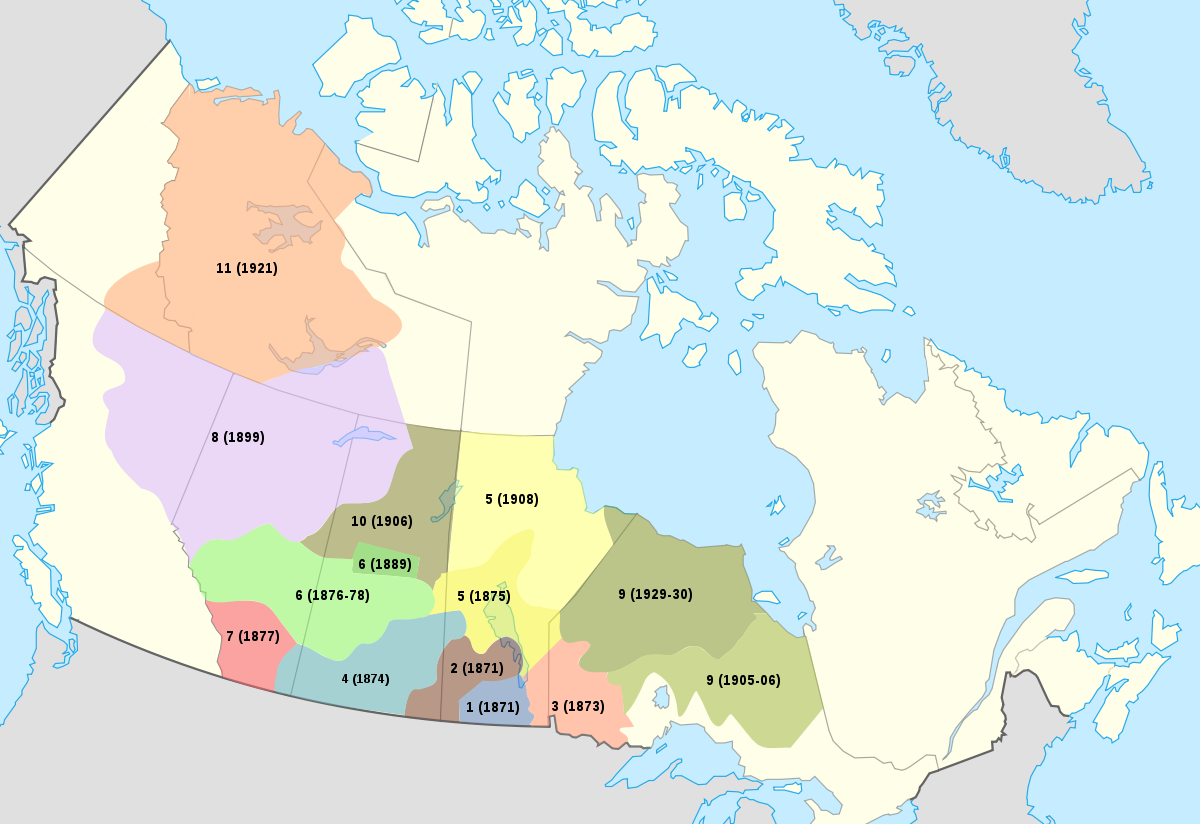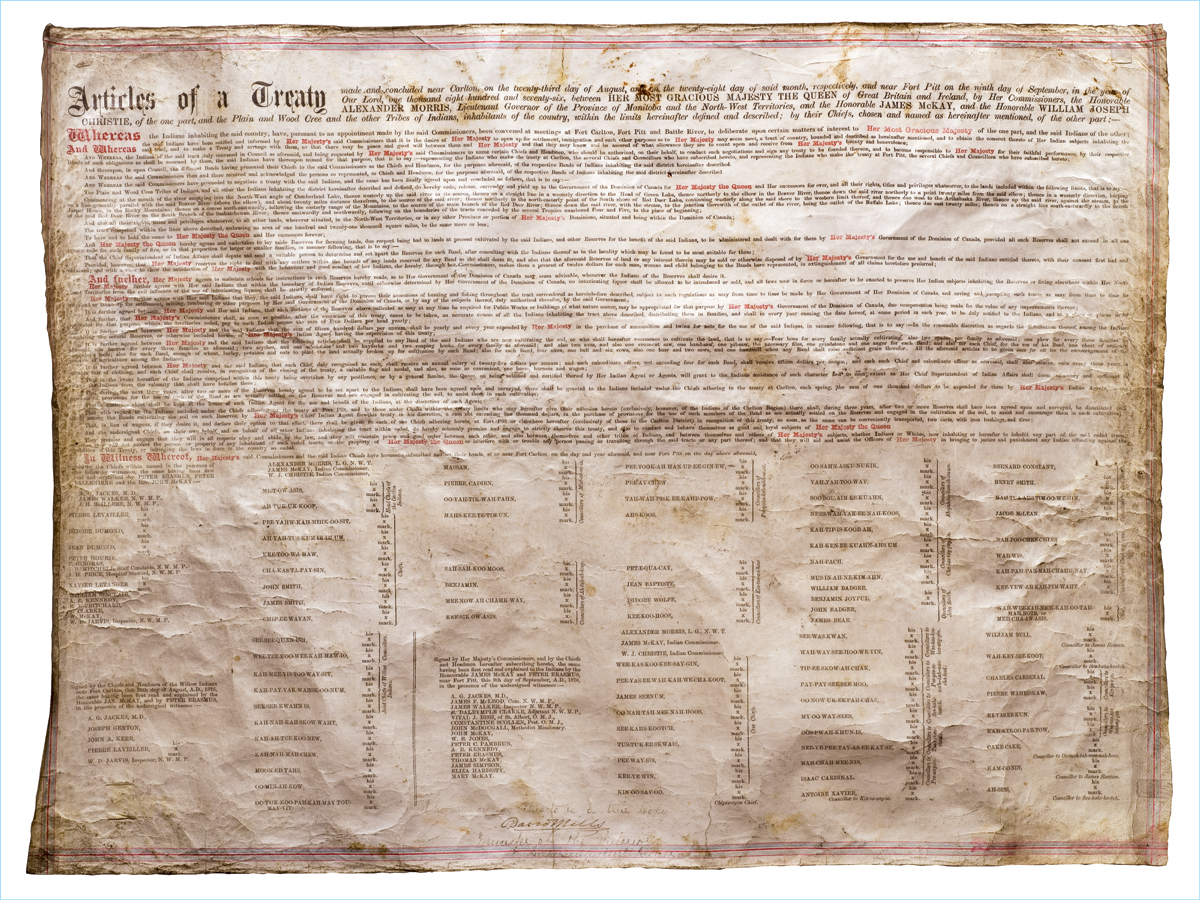We are all Treaty Peoples
The Lacombe & District Historical Society & Lacombe Museum Board, Staff, Volunteers, and Members acknowledge we are privileged to be working, volunteering, and living on Treaty 6 Territory and the Métis homeland, a traditional gathering place for diverse Indigenous Peoples including the Maskwacis Nēhiyaw (Bear Hills Cree), Niitsítapi (Blackfoot), Nakoda (Stony), Dene (Athabascan), Métis and non-First Nations people whose footsteps have walked these lands for time immemorial, and whose history, culture, and language continues to influence our vibrant community.
What do we mean when we say Treaty No. 6, or Treaty No. 6 Territory?
Treaties are formal agreements, or contracts, between two sovereign states – in this case Treaty No. 6 was signed between the First Nations groups: Cree, Saulteaux, Nakota, and Dene; and the Dominion of Canada, in the name of the Queen Victoria. There were 11 such treaties signed across the country as we know it today.

Image source Wikipedia Images.
Treaty No. 6 was signed on August 23, 1876 at Fort Carlton in Saskatchewan. The total area of the Treaty stretches from western Alberta, through Saskatchewan; and includes 50 First Nations. Provisions in the Treaty recognize the notion of the medicine chest, as well as the right to assistance during pestilence or famine and the right to education.
First Nations understood they would receive assistance to the transition of a new lifestyle, maintenance of their cultural and spiritual rights, right to hunt, trap, and fish, education, medical assistance, reserve land, agricultural tools and support, and peaceful co-existence with the newcomers. The text of the Treaty states:
- Reserve land in the amount of one square mile per family of five;
- An annual cash payment at a rate of $25 per Chief, $15 per headman and $5 for all other band members, and a one time present of $12 for each member of the band who agreed to the Treaty;
- Twine and ammunition at a value of $1500 per year;
- For each band and family certain agricultural implements such as hoes, spades, livestock, horse, and wagon;
- A school once the people settled on a reserve;
- The right to pursue hunting, trapping, and fishing;
- A medicine chest to be kept at the house of the Indian agent on each reserve;
- Rations were to be given in times of pestilence and famine;
- During the first three years after Treaty was taken, First nations who had settled on reserves and were farming were to receive $1000 in agricultural provisions. (Dodson21)
Newcomers would receive a peaceful co-existence with First Nations people, access to lands for settlement, farming, railways, and future industrial development.

